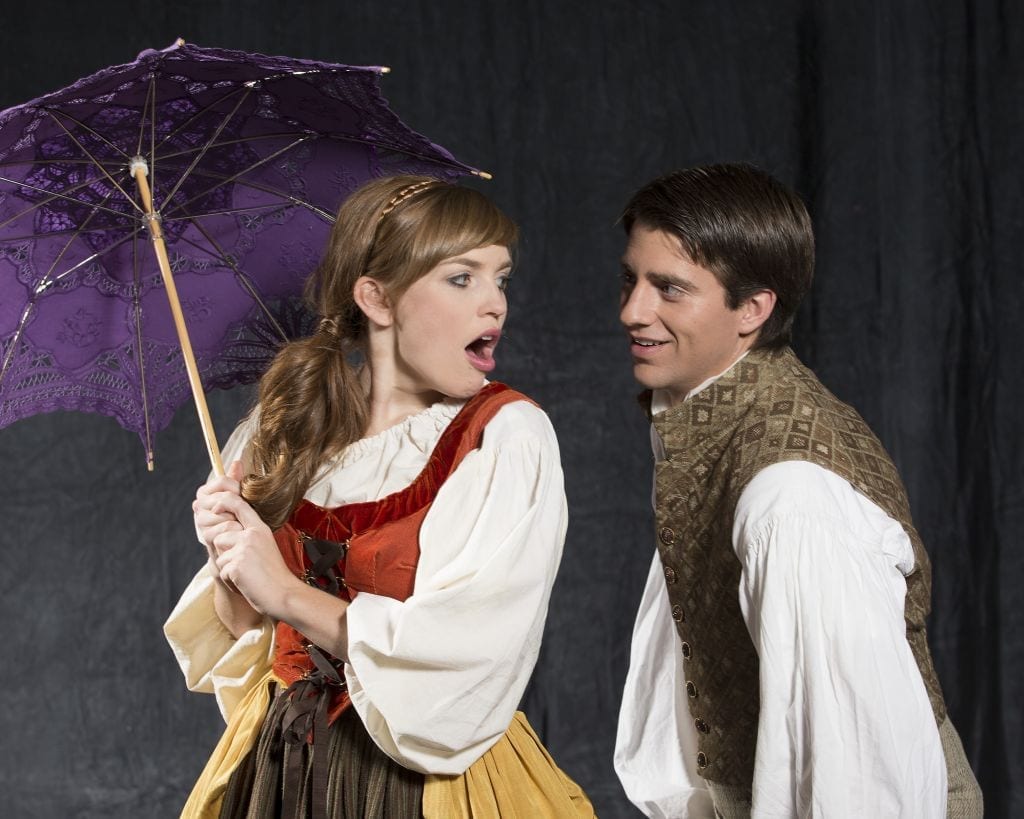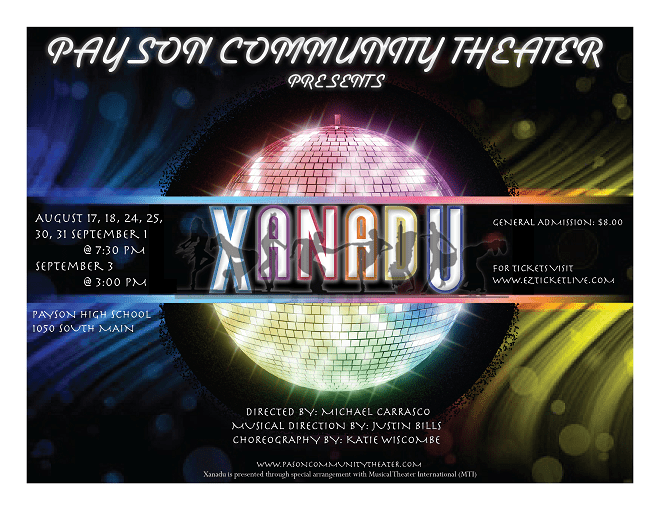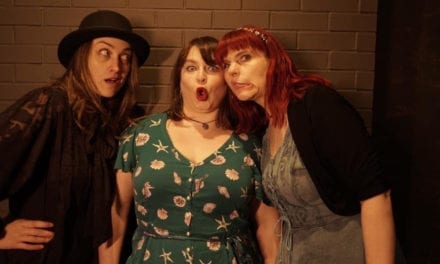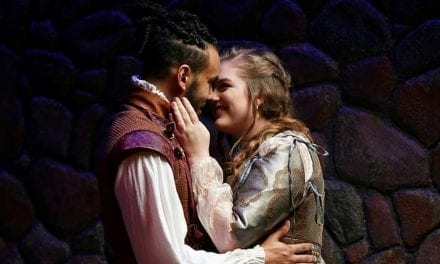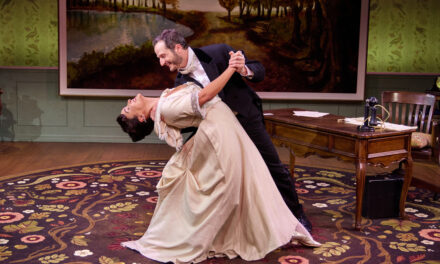PROVO — Theatre aimed at children is often a tricky thing to review. In the past I’ve been unsuccessful in capturing the essence of a show in a review because I’ve evaluated it the same way I do a show aimed at adults or a general theatre-going audience. So, when I got the assignment to review another theatre for young audiences show, I was determined to try to see the production as the children in the audience did, while still keeping my reviewer’s brain turned on. Thankfully, BYU Young Company’s The Legend of Sleepy Hollow was an unorthodox piece of theatre that was ideal for a long-time reviewer who was trying to see a show differently.

Show closes October 27, 2012.
This version of The Legend of Sleepy Hollow is unconventional because it blurs the line between traditional theatre and storytelling. Teresa Dayley Love‘s adaptation of Washington Irving‘s classic tale dispenses completely with the fourth wall and often has performers directly addressing the audience to move the plot along. The effect makes this show feel more like a bedtime story than a play. Because the production is aimed at children, I think this is a good thing. Most children are familiar with bedtime stories; fewer are probably familiar with live theatre. I believe that this creative decision from Love makes the play more accessible to children than it might be if it obeyed the conventions of traditional theatre.
In addition to adapting the story, Love also served as the director of this production. She let few moments in the play pass without audience involvement. Throughout the entire production, audience members (both children and adults) were pulled on the stage to serve as farm animals, windows, and minor characters in the story. The audience involvement was fun, and it allowed the children in the audience to play. (After all, this is a play, shouldn’t it be fun and playful?) Love’s direction is also ideal for children in that relies heavily on imagination. At moments in the play audience members are required to imagine the presence of characters or aspects of the environment (like smoke). Because naturally children have so much imagination, I think this is a smart move for Love. The minimalist scenery and small stage also contributed to the show’s reliance on the audience’s imagination and kept attention focused on the action.

Katrina Van Tassel played by Lisa Lundbert Moncur and Brom Bones played by Logan Hayden.
The cast consisted of only two speaking performers (Logan Hayden and Anna Lisa Moncur in the performance I watched) and two non-speaking performers who were “spirits” (Devin Wadsworth and Maile Hekekia) that helped prepare audience members for participation and added sound effects and ambiance to the scenes. Moncur was my favorite performer of the four. She differentiated her characters quite well; whether she was playing the flattered Mistress Van Keekan or Katrina Van Tassel (the flirtatious object of Ichabod Crane’s affection), Moncur always made it clear through her physicality what type of character she was playing. Hayden, however, (the other speaking cast member) did not make as many distinctions among his characters. His Ichabod Crane was awkward and self-conscious, but his other characters tended to blend together too much. Of the two spirits, Wadsworth was the more enjoyable to watch; he was impish in his movements and always seemed to be scheming to find a new way to become involved in the story.

The spirits that haunt the woods around Sleep Hollow played by Averill Corkin (left) and Maile Hekekia (right) frighten Mistress Van Keekan (Lindsay Clark).
Although the scenery for this show consists of a single stool-like object (it’s sort of hard to describe) and four tree-like stands holding lanterns (designed by Ward Wright), this show is beautiful, mostly because of Alanna Kruger‘s costumes. The two speaking cast members had period 1700’s clothing that was enjoyable to look at because it was so different from anything that Americans wear today. The two spirits were dressed in tattered layers of gray and white clothing that truly made them ghostlike.
I also want to make it clear how age appropriate this play is. Yes, The Legend of Sleepy Hollow is a spooky ghost story. But there’s nothing in it that would give young, sensitive children nightmares, and I wouldn’t hesitate to take my pre-school aged nephew to the production because the tone is completely lighthearted and playful. I also admire how educating the production is without being didactic. By the end of the play, children would know what “theatre in the round” is and important differences between live theatre and other forms of entertainment (like movies, TV, and video games).
Although I don’t have children of my own (and I haven’t been a child in many years), I think that The Legend of Sleepy Hollow is a suitable production for young theatre goers. And at only 50 minutes, children can go to the play and be home before bedtime.

